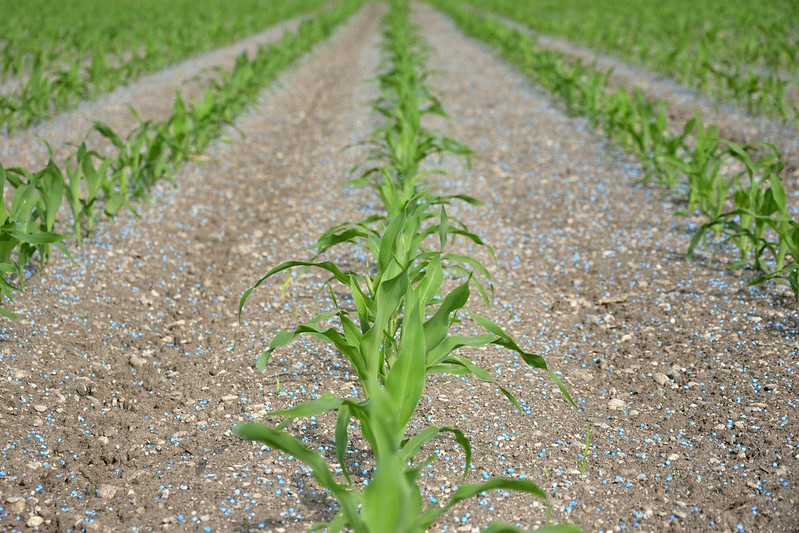A quiet revolution is happening in plant nutrition. Of course, we are all familiar with the Green Revolution, which was, in part, a plant nutrition revolution too. It transformed agriculture in Asia through the use of synthetic nitrogen fertilisers. This, combined with improved seed varieties and irrigation, dramatically boosted yields and helped avert famine. Today, around half of global food production depends on nitrogen fertilisers.
But it is a cautionary tale, with the costs well documented: depleted soils, polluted waterways, pesticide contamination and greenhouse gas emissions. Today, synthetic fertilisers account for 2–3 per cent of global emissions, with roughly one-third coming from the production process that generates a huge amount of heat and CO2. There were socio-economic consequences too: farm debt, bankruptcy, land loss, the rise of mega-farms and waves of rural-urban migration.
As we now stand on the brink of another plant nutrition transformation – and one that I hope will benefit Africa too – we must ensure the new technologies are not only productive but also environmentally sustainable and socially equitable. Meeting the first condition will be relatively straightforward; ensuring equity is likely to prove far harder.
Three promising breakthroughs in plant nutrition
But first, let’s look at the tech. Three categories of plant nutrition currently hold particular promise:
- Cleaner fertiliser production
Approaches like green hydrogen-based ammonia and non-thermal plasma nitrogen fixation can slash emissions from fertiliser manufacturing – by literally taking the heat out of production. What once seemed far-fetched is already happening: I recently saw that in Kenya – a small plant producing ammonia for a local commercial farm, using only solar power, water, and air. - Smarter fertiliser use
A lot of emissions from fertiliser actually occur in the field: improper application can lead to excess or unused fertiliser being lost to the atmosphere or leeched away through the soil. These can be reduced via processes like biological nitrification inhibition (BNI) and technologies like nitrogen stabilisers, which keep nitrogen in the soil where plants can use it and help release nutrients in sync with crop demand. The CropSustaiN initiative, backed by the Novo Nordisk Foundation and CIMMYT, is scaling up access to new BNI wheat varieties. - Alternative nutrient delivery.
The microbiome is a fascinating frontier in plant nutrition. From the use of beneficial microbes to improve the availability and uptake of nutrients to the development of biological phosphate fertilisers, all the way to carbon quantum dots (fluorescent nanoparticles), are being developed to fix nitrogen, solubilise phosphorus and stimulate plant growth. These biological options could help reduce dependence on synthetic fertilisers.
Risks, inequities and “snake oil”
These breakthroughs are exciting, but they are not guaranteed to deliver the triple win we need. Green ammonia may clean up production, but if it results in over-application of fertiliser, emissions on farms will rise. Microbes may mutate and become harmful, while nanoparticles may accumulate in food chains – with as-yet unknown effects. And expensive new plant nutrition products could further exclude resource-poor farmers, widening inequality.
Fraud is another danger. The fertiliser industry already has a history of dubious marketing. In a U.S. study across 100 environments and 22 states, nine biostimulants – substances or microorganisms applied to seeds, plants or soil that stimulate natural processes – were tested on soy yields. None consistently outperformed controls; in many cases, responses were marginal. Without robust oversight, the door is open to more “snake oil” solutions that risk taking farmers for a ride.
All this means the success of this new revolution will depend as much on governance as on science. Smart policies can stimulate both supply and demand for new plant nutrition innovations, and regulation needs to be rigorous enough to ensure label claims are met, but efficient enough to avoid years of delay. Harmonised definitions, clear efficacy testing, and fast-track approvals for proven technologies are all urgently needed.
Equity: the hardest frontier
Governments and donors can reduce risk and costs through subsidies, guarantees and being patient with capital investment – but choices must be made carefully. They will also need to decide whether to subsidise inputs, strengthen extension services, expand insurance, invest in safety nets or some combination of these. While digital technologies and artificial intelligence will add another layer of potential, enabling precision nutrient management through sensors and predictive analytics, access and affordability will shape outcomes.
Hard truths must also be faced. Evidence suggests that many smallholders in Africa will not escape poverty through farming alone, regardless of technological advancement. For some, leaving agriculture may offer the best path to improved prosperity. This makes social protection measures and retooling essential companions to technological change that governments and researchers need to plan for.
So while the science is advancing rapidly, policy, regulation and investment must catch up. The coming revolution in plant nutrition is real. Whether it becomes a revolution for sustainability and equity—or another story of unintended consequences—depends on the choices we make now.





